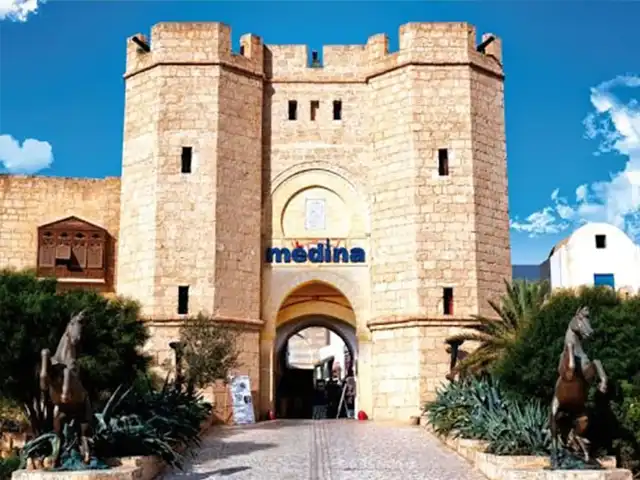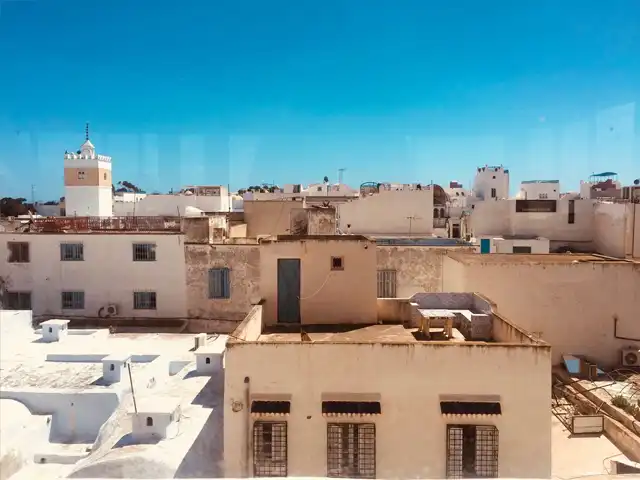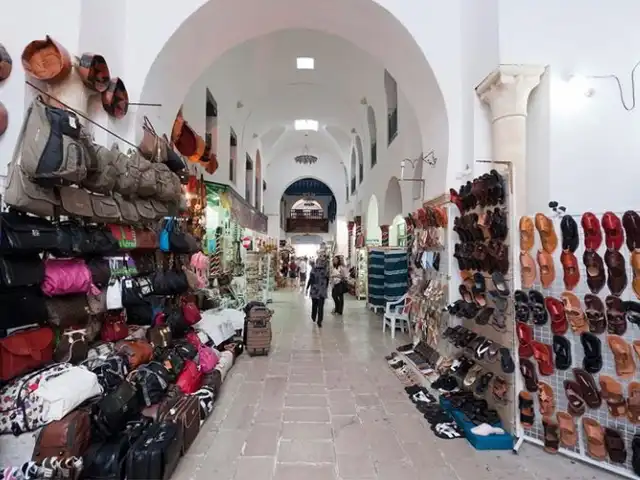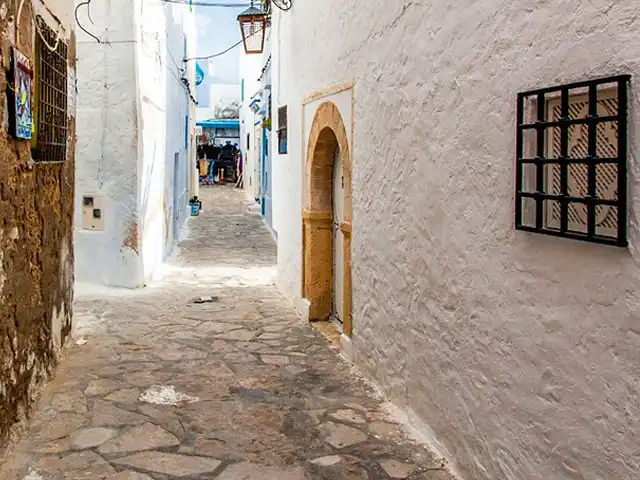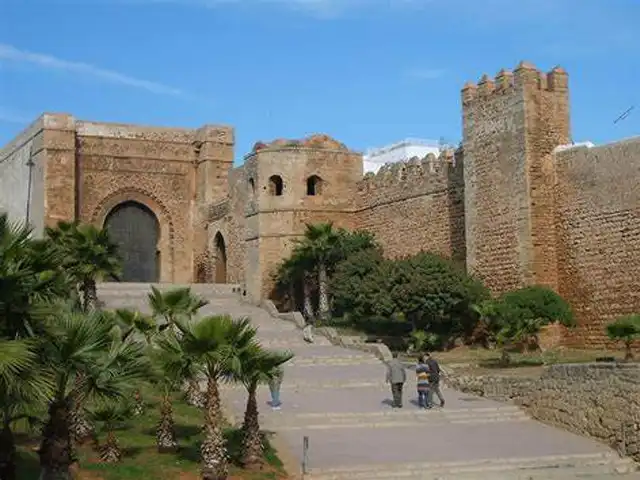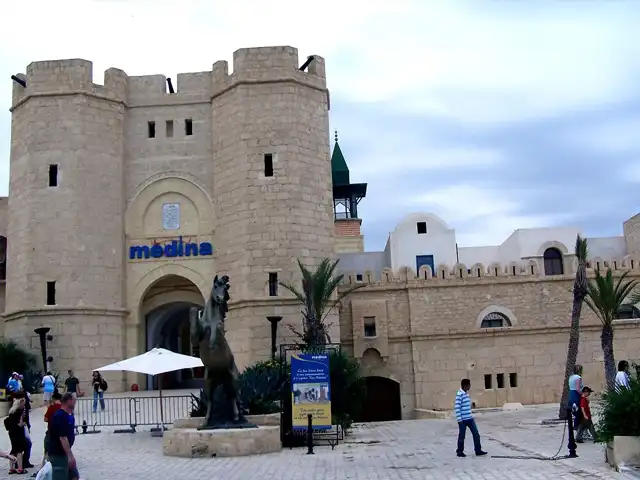The medina of Hammamet
The medina of Hammamet extends over a small space on the southern tip of the city of Hammamet. Surrounded by ramparts, the latter are pierced by three entrances.
It is considered the oldest urban structure in the city, it benefits from a strategic location by the sea. And that is what makes it an original city. Its spatial layout reflects characteristics that govern the Arab-Muslim lifestyle and reflects the inspiration of its culture.
The medina is indeed surrounded by a walled enclosure and reinforced by a citadel called “the kasbah” built of high and thick walls containing three doors by which the ancient city communicated with the outside built of a fort built by the Arabs in the 12th Century, as well as towers enclosed in a wall. The fundamental principle of its spatial layout is based on the clear separation between public life and private life.
Hammamet being a place very frequented by tourists, particular care seems to be taken to preserve the brilliance of the small medina. In the maze of intersecting alleys, there are many shops near the souk. The merchants are mostly seasoned rogues with endless patter, which promises a serious negotiation session. You have to think twice because there are countless trinkets of poor quality.
It’s hard not to have the feeling of being taken for a somewhat stupid tourist in the middle of all these souvenir objects. A ready-to-wear shop remains essential, Fella, where some big names have shopped: Greta Garbo, Grace of Monaco… The fact remains that the stroll in the medina is more than pleasant as soon as the ‘we reach certain less busy passages: we are then surprised by the dazzling whiteness of the facades of its houses, and the beautiful doors painted in bright colors and richly decorated, some of whose contours are sculpted.
Between culture and leisure, shopping and gastronomy, the medina is a unique place in its cultural and tourist aspects. It is an original concept, a mixture of pleasure, entertainment and discovery with the intention of provoking the curiosity of visitors.
The medina of Hammamet in pictures
